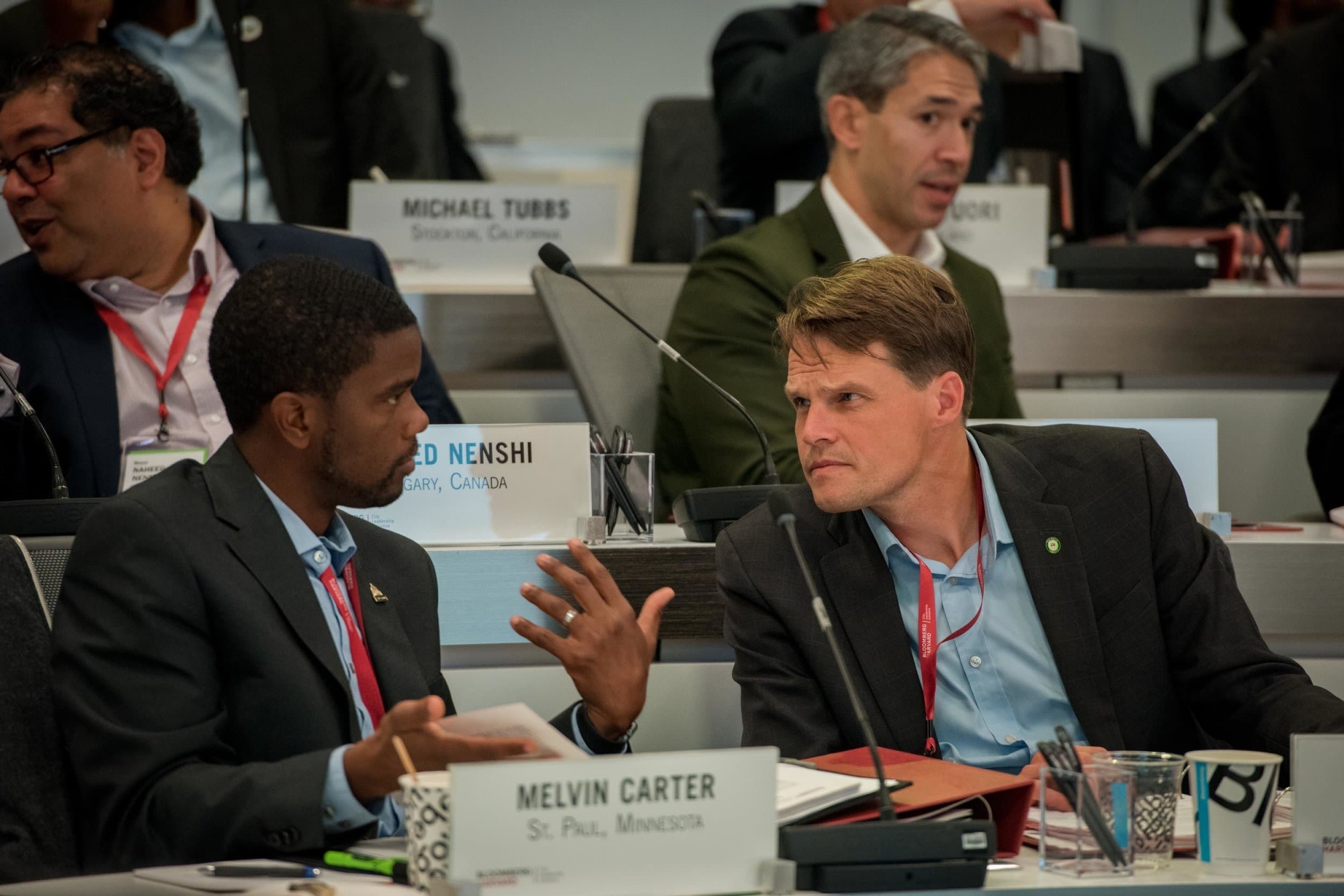Tackling city challenges through partnerships

Nov. 15, 2018 – Before she joined the year two cohort of the Bloomberg Harvard City Leadership Initiative, a major focus for Atlanta mayor Keisha Lance Bottoms was the founding of a new city office of diversity and inclusion, called One Atlanta.
After the second day in the classroom, Bottoms was thinking a little differently about One Atlanta–she was less excited about the office’s “lofty goals,” and more determined to get specific on metrics for these goals.
“There’s no success without clarifying goal-setting,” Bottoms realized. “We have lofty goals at One Atlanta, but we haven’t defined what success really is, yet.”
It was a session with Harvard Business School professor Jan Rivkin that got Bottoms thinking about the collaboration back in Atlanta.
Rivkin’s sessions looked at how city governments can tackle local challenges by working effectively with representatives from non-profit organizations, school systems, the private sector, and the community.
He laid out how a cross-sector collaboration can be effective through a case that provided real-world examples of ineffectiveness. It focused on a youth employment initiative in Hartford, Connecticut, made up of members who struggled to communicate, disagreed on the goal of their collaborative work, and didn’t include in their group key people directly affected by their work.
“This is a very common situation,” Calgary mayor Naheed Nenshi said. “Every mayor in the room has their version of the case.”
Each of the Hartford group’s struggles connects with what Rivkin said are “key challenges for any cross-sector collaboration”: agreeing sufficiently on the problem to be addressed and the best way to address it; crafting a governance structure and decision-making processes for the coalition; enlisting groups and people who lend legitimacy and support to the project; and building the operational capacity to deliver the hoped-for solution.
Rivkin’s framework for laying out these challenges is built upon a framework created by Harvard Kennedy School professor Mark Moore, called the ‘strategic triangle,’ that shows how any public-focused endeavor faces the challenge of clearly articulating the public value proposition and aligning operational capacity, legitimacy, and support in order to succeed.
Nenshi, a Kennedy School alumnus who learned about the strategic triangle years ago and later taught the framework as a professor in Calgary, was glad for the content refresher.
“I had completely forgotten about it, and forgotten to use it in my own practice,” he said.
After Rivkin’s sessions, Nenshi said he was “re-inspired” to bring classroom learning into his work as mayor. He noted how important the strategic triangle is for coalition-building around an issue.
Because public value, operational capacity, legitimacy, and support are each so important for achieving a goal in the public sector, it makes sense that they would each come with corresponding challenges within coalitions working for the public.
Rivkin discussed a dilemma that cross-sector collaborations often face when they try to agree on what to accomplish and how to evaluate it. If different members of a group are each working toward a different goal or measuring the same goal differently, they’re not operating as a group at all. But if they wait until goals are aligned perfectly before they act, they’ll never start to work together. The aim, Rivkin explained, is for the group to get enough alignment early on to work together, build momentum, and become better aligned over time.
In the case of One Atlanta, Bottoms said she might have previously assumed “everyone else shares my goals and measures of success, only to find out that’s not the case at all.”
After discussing this in the classroom with her fellow mayors, Bottoms realized “we need to make the understanding of these measures explicit, moving forward.”
Mayor Melvin Carter, of St. Paul, MN, said he has discovered that this alignment is important in transitioning the challenge from something collaborators discuss amongst themselves, to something they discuss with others as they try to build support or capacity.
Even something straightforward, like clearing snow in St. Paul, needs to have its purpose clarified in order to decide how to operationalize it.
“When I ask our team, ‘why do we plow the snow?’ it’s really for a million reasons,” Carter said. “But the reason we decide is the pre-eminent one, is going to have a lot of impact on how we frame the plan for plowing.”
Nenshi, meanwhile, found himself thinking about the governance structure of a new collaborative effort he was planning to launch, and how to enlist the right groups to build capacity, legitimacy, and support around this effort.
“I’m trying to start a brand new, system-wide initiative on mental health and addiction in Calgary,” he said. He was starting to think about who to involve, how to get them involved, and who might make sense to lead the effort.
Rivkin’s discussion highlighted, for Nenshi and all the mayors, how different organizations could lend different types of operational capacity and support to a collaboration.
In a new Calgary addiction-focused initiative, for instance, non-profit organizations may offer experienced counselors, while businesses could provide funding to increase the number of beds in a rehabilitation program, and government might draft new policies around treatment for addiction.
“City government, non-profits, and the business sector all do certain things really well,” Nenshi said, “and they need to learn from each other.”
“After listening to these cases,” he added, “the new initiative is something I’ll now put to work on Monday back at home.”


